Two types of R-systems in English:
Accents [in which] historical /r/ is retained consistently in some non-prevocalic environments but lost consistently in others, may be referred to as semi-rhotic.
(Wells 1982:221)
Varieties with intermediate rhoticity arise under dialect contact: either a traditionally non-rhotic accent is shifting towards rhoticity (documented cases include the Jamaican basilect and Boston English) or vice versa (e.g., Southland New Zealand English, North Yorkshire English), due to the influence of the more prestigious variant. The resulting system does not coincide with that of either the substrate or the superstrate.
Overall degree of R realisation (rhoticity): 20–40% (e.g., 21.7% in a survey on Jamaican Creole, Rosenfelder 2009:68; 38% in a survey on Boston English, Irwin & Nagy 2007:140)
(A) The melodic effect: a preceding
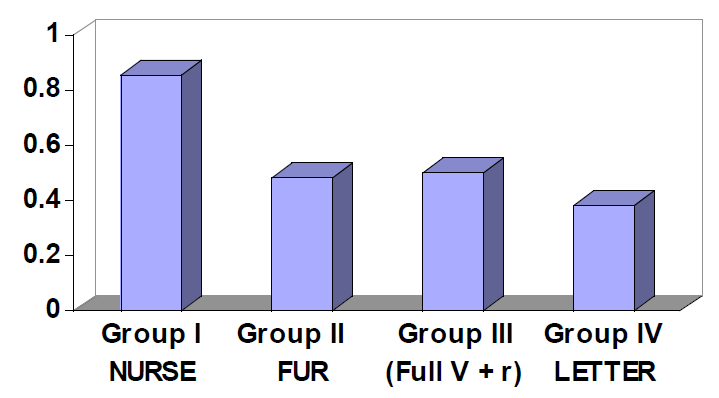
Possible explanation:
(B) The prosodic effect: word-final (stressed) position supports the realisation of R
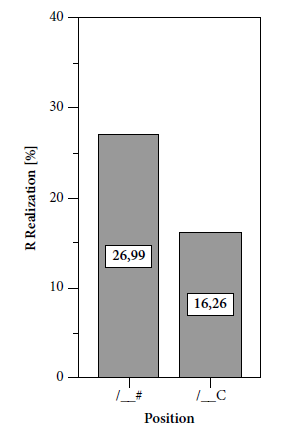
Possible explanation: The phonological strength of a position inhibits the lenition/deletion of the segment in that position. Word-final is stronger than preconsonantal, stressed is stronger than unstressed.
It is well-known that the various forms of language contact display parallel characteristics. Specifically, the creole arising from a substrate and a superstrate language and the interlanguage drawing on the L1 and L2 under foreign language acquisition both represent mixed and/or intermediate systems, whose properties are in turn governed by general principles of linguistic organisation (called “interlanguage hypothesis”, cf. Plag 2009).
Question: Can the “imperfect” acquisition of non-rhoticity result in semi-rhotic interlanguages?
Participants: 13 Hungarian language teachers and BA students of English Studies, i.e., advanced learners of English with a rhotic L1 plus heavily influenced by spelling in their English. For all of them the target accent is non-rhotic.
Methods: The participants took part in a recording session involving three tasks: 1. free speech on a given subject; 2. guided speech (placing objects in a picture); 3. reading out a passage. The tokens containing potential non-prevocalic R’s were entered into a Microsoft Excel spreadsheet, which was set to filter for three variables: position of R, stress and preceding vowel. The participants’ realisations (and non-realisations) of all types of the tokens were added to the database.
Overall degree of R realisation (rhoticity): 26%, i.e., non-rhotic-targeting students perform reasonably well but not without “errors”
Inter- and intra-speaker variation: considerable
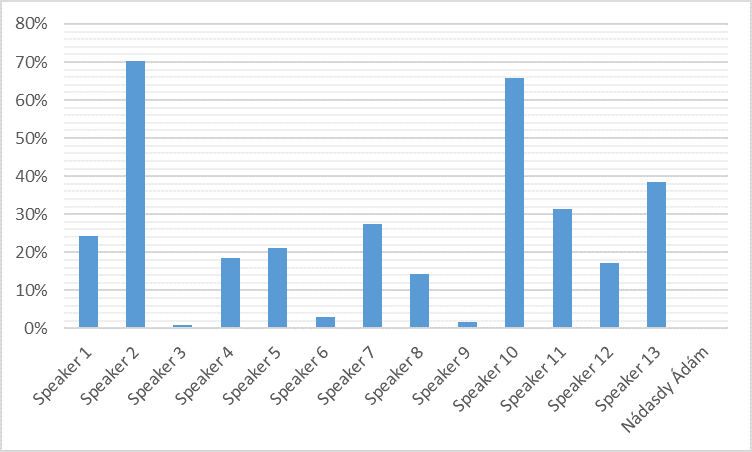
(A) The melodic effect
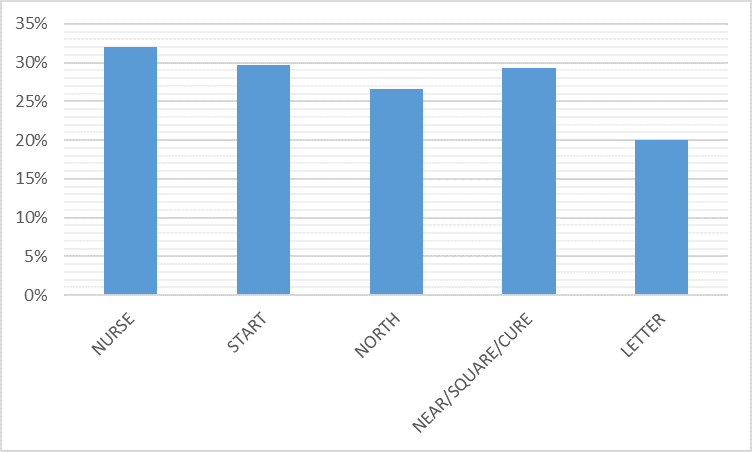
Conclusion: The melodic effect is not attested in our sample.
Possible explanation: In V+r sequences Hungarian learners of English do not merge the vowel with the /r/, i.e., they do not produce R-coloured vowels or syllabic /r/’s. As a result, all V+r sequences are treated in a uniform fashion, irrespective of the quality of the V.
(B) The prosodic effect: word-final (stressed) position supports the realisation of R
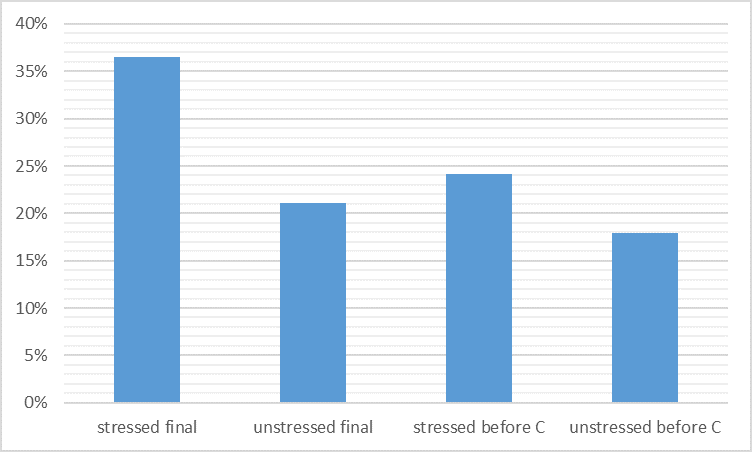
Conclusion: The prosodic effect is attested in our sample: the word-final stressed position supports the realisation of R. Final R is slightly more stable than preconsonantal R, while stress seems to be the major factor.
That is, non-rhotic-targeting learners of English speak a variably semi-rhotic variety of Hunglish.
Possible explanation: learners depart from R-ful forms under the influence of spelling, therefore achieving the non-rhotic target means R-suppression. Before they reach full non-rhoticity, the intermediate stage in their interlanguage is governed by general principles of linguistic organisation (cf. Plag 2009), i.e., by universal phonological principles of prosodic strength.
Irwin, Patricia and Naomi Nagy (2007) Bostonians /r/ speaking: A quantitative look at (R) in Boston. University of Pennsylvania Working Papers in Linguistics 13(2), 135–147.
Plag, Ingo (2009) Creoles as interlanguages: Phonology. Journal of Pidgin and Creole Languages 24(1), 119–138.
Rosenfelder, Ingrid (2009) Rhoticity in educated Jamaican English: An analysis of the spoken component of ICE-Jamaica. In Hoffmann, Thomas and Lucia Siebers (eds.) World Englishes: Problems, properties and prospects. Amsterdam: John Benjamins, 61–82.
Wells, John C. (1982) Accents of English. Cambridge: Cambridge University Press.